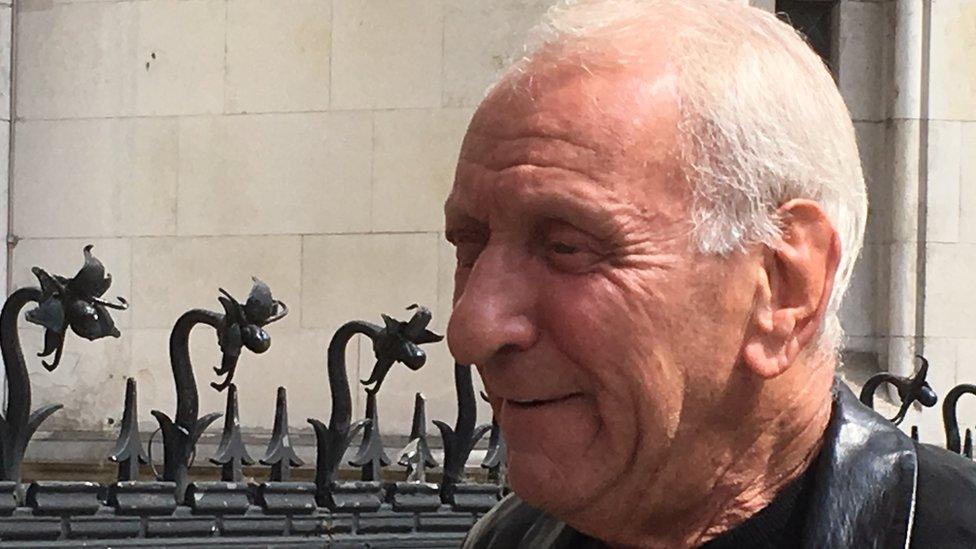Paul Cleeland: ‘Gun error’ claim over 1972 murder case
- Published
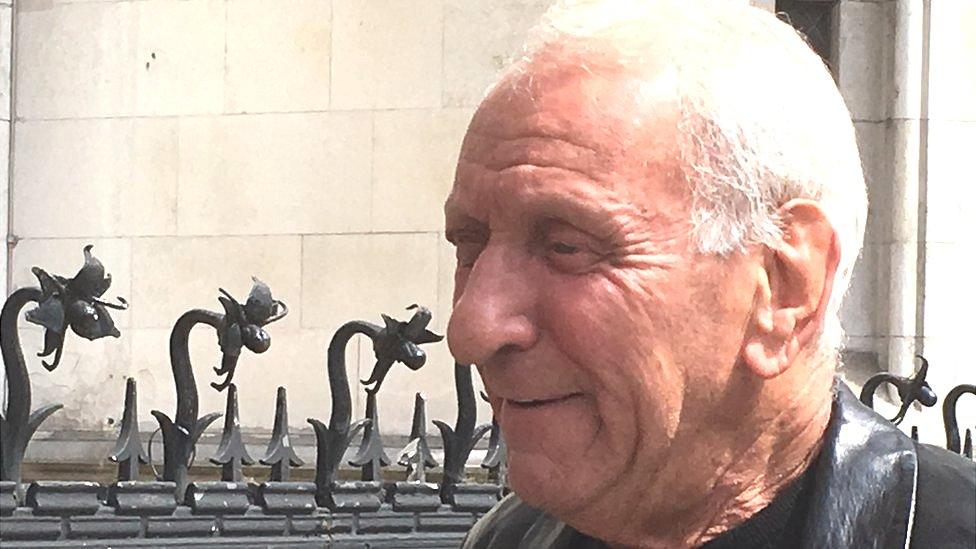
Paul Cleeland has been fighting to clear his name for decades
Papers have shown a gun at the centre of a 1973 murder trial may have been the wrong weapon, it has been claimed.
Paul Cleeland, who says he was wrongly convicted, has obtained a transcript of his failed appeal in 2002.
He said prosecutors claimed Terry Clarke was shot in Hertfordshire in 1972 with a Gye and Moncrieff (G&M) but two other guns were found at the time.
His lawyers have said judges wrongly ruled the other guns were excluded. A court heard the claims on Tuesday.
Suspected gangland boss Mr Clarke was shot in Stevenage after returning home from a bar on 5 November 1972.
Cleeland always insisted he was innocent but he served 26 years behind bars.
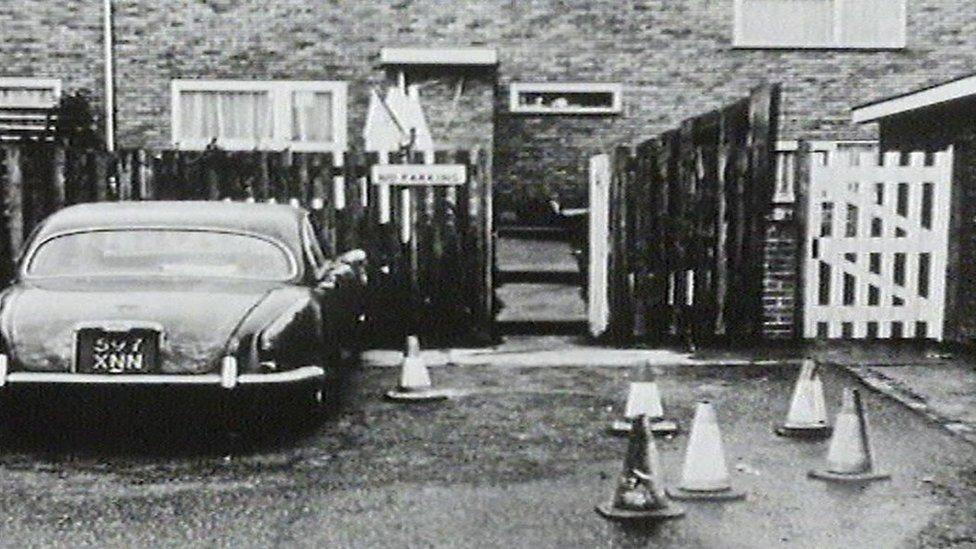
Terry Clarke was killed after he returned home from a bar
Court documents listed the guns as the G&M shotgun, an American Western Field 12-bore pump action repeater shotgun and a German Muller 12-bore double-barrelled shotgun.
A note by Edward Fitzgerald QC, who previously represented Cleeland, claimed the Appeal Court ruling in 2002 "was flawed by a fundamental error of fact".
He wrote: "The Court of Appeal in 2002 proceeded on the basis that the evidence excluded the possibility that either of the two shotguns put forward by Mr Cleeland as the murder weapons could have been the murder weapons.
"However, the transcript of the evidence obtained by Mr Cleeland confirms that the Home Office expert, Mr Pryor, did not rule out the possibility that the pump action shotgun was the murder weapon."
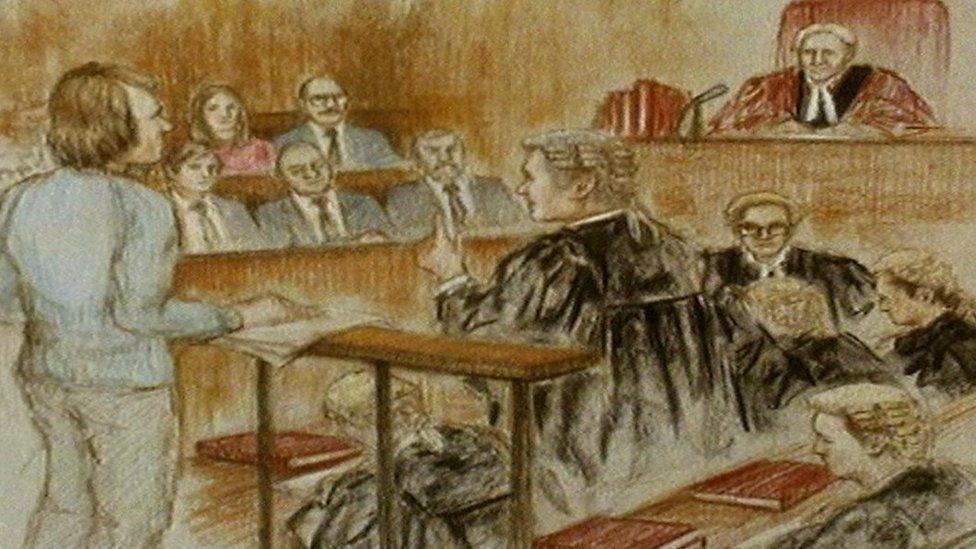
Paul Cleeland represented himself in 1973
Lawyers for the 79-year-old from Folkestone, who has been representing himself, obtained the transcript from the court after accessing a closed file, external in the National Archives.
Folkestone MP Damian Collins, who has backed Cleeland's campaign to clear his name, said: "Over many years, Paul was unaware of the contents of those papers when they could have real significance to his case."
The MP said most of the original trial evidence had been challenged and said: "Over the past 10 years I've been involved with it [Cleeland's case], a constant stream of new information has come out and I would say the direction of that information has always been to cast doubt on that original judgement."
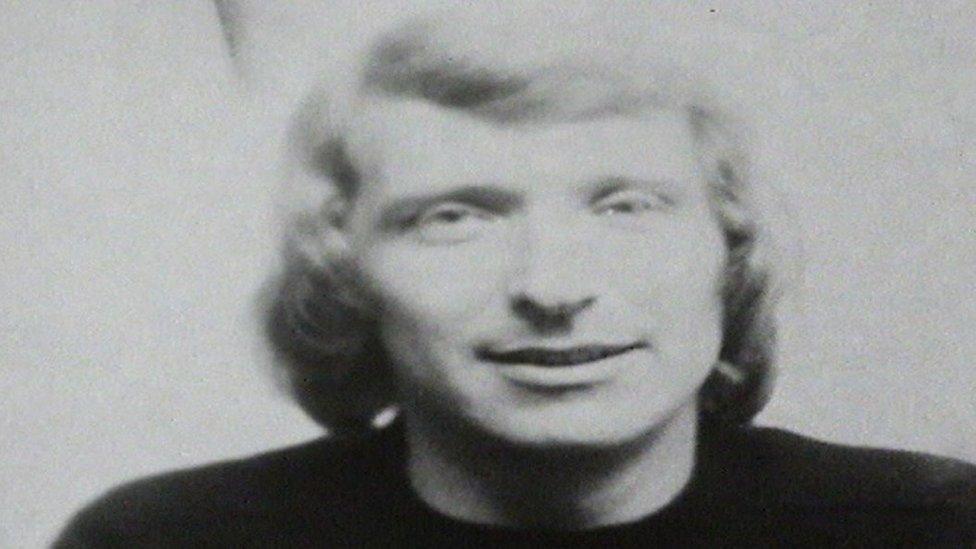
Paul Cleeland was 30 when he was jailed
Cleeland put the claims before the Administrative Court in London on Tuesday.
During the hearing, Cleeland told the court the transcript, which he received eight to ten months ago, had been locked away for years and was "totally in contradiction of the judgement".
However the judge, Lord Justice Lavender, said: "You were there when Mr Pryor gave evidence."
At the hearing, Cleeland sought to amend the grounds of his application for a judicial review of a Criminal Cases Review Commission (CCRC) decision not to refer his case to appeal that was dismissed last year.
Sarah Clover, representing the CCRC, told the court the G&M gun had "only ever been put forward as a possibility".
She said the CCRC had considered the matter and concluded it would not have been justified in referring the case to appeal, while the Appeal Court in 2002 was aware of discrepancies and took them into account when it rejected the case.
The court heard that the guns were later destroyed.
The judge will hand down his ruling at a later date.
- Published12 July 2018
